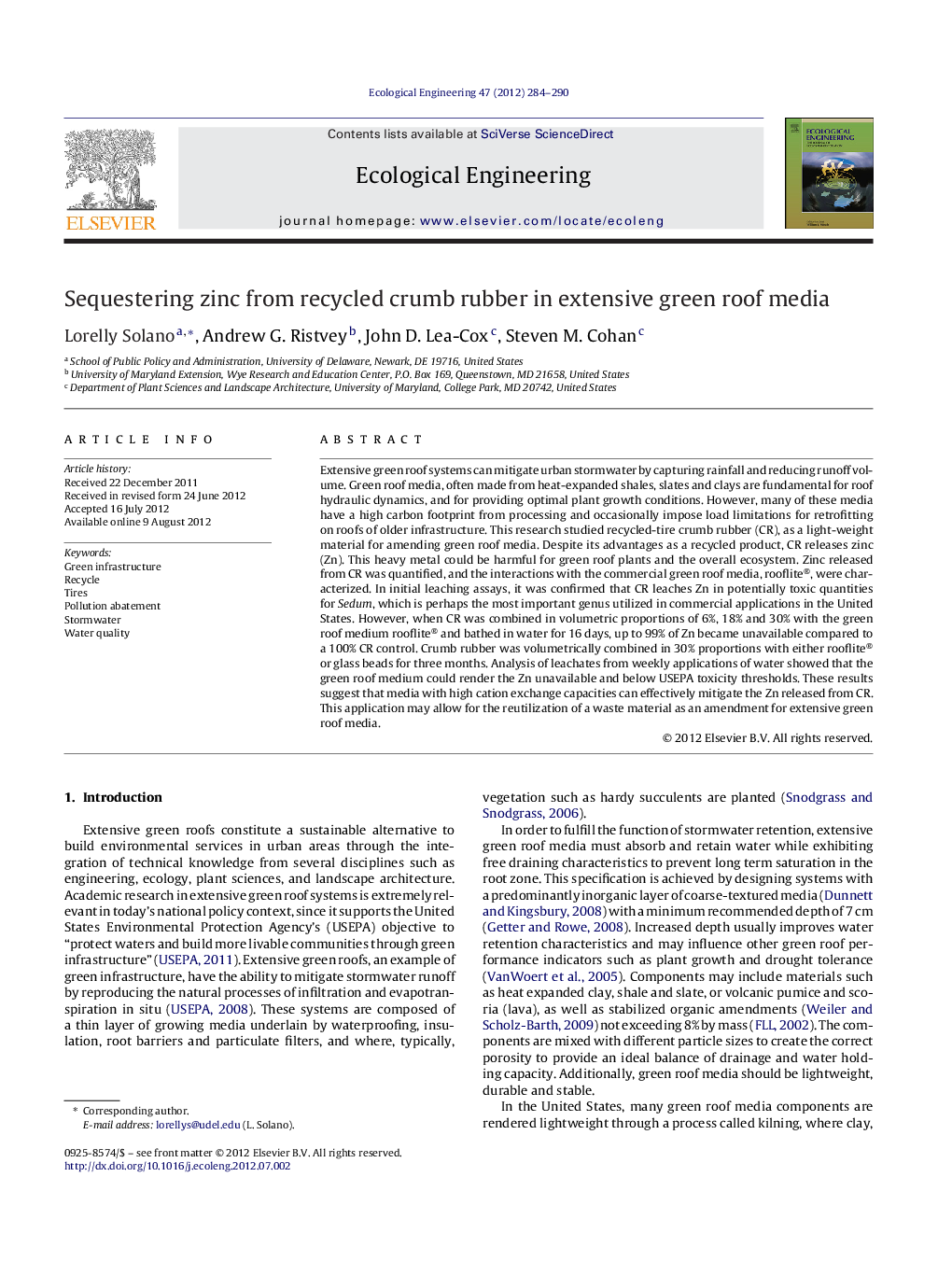| Article ID | Journal | Published Year | Pages | File Type |
|---|---|---|---|---|
| 4390032 | Ecological Engineering | 2012 | 7 Pages |
Extensive green roof systems can mitigate urban stormwater by capturing rainfall and reducing runoff volume. Green roof media, often made from heat-expanded shales, slates and clays are fundamental for roof hydraulic dynamics, and for providing optimal plant growth conditions. However, many of these media have a high carbon footprint from processing and occasionally impose load limitations for retrofitting on roofs of older infrastructure. This research studied recycled-tire crumb rubber (CR), as a light-weight material for amending green roof media. Despite its advantages as a recycled product, CR releases zinc (Zn). This heavy metal could be harmful for green roof plants and the overall ecosystem. Zinc released from CR was quantified, and the interactions with the commercial green roof media, rooflite®, were characterized. In initial leaching assays, it was confirmed that CR leaches Zn in potentially toxic quantities for Sedum, which is perhaps the most important genus utilized in commercial applications in the United States. However, when CR was combined in volumetric proportions of 6%, 18% and 30% with the green roof medium rooflite® and bathed in water for 16 days, up to 99% of Zn became unavailable compared to a 100% CR control. Crumb rubber was volumetrically combined in 30% proportions with either rooflite® or glass beads for three months. Analysis of leachates from weekly applications of water showed that the green roof medium could render the Zn unavailable and below USEPA toxicity thresholds. These results suggest that media with high cation exchange capacities can effectively mitigate the Zn released from CR. This application may allow for the reutilization of a waste material as an amendment for extensive green roof media.
